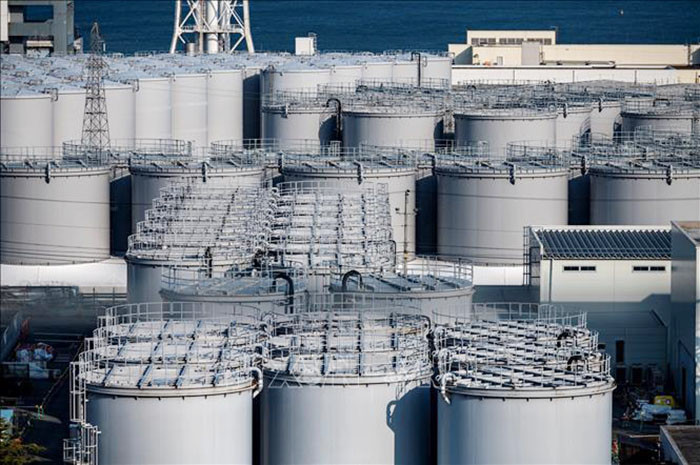On July 4, the International Atomic Energy Agency (IAEA) said Japan's plan to release radioactive treated wastewater stored at the Fukushima nuclear power plant into the Pacific Ocean is in accordance with safety standards.

Wastewater tanks at the Fukushima Daiichi nuclear power plant in Fukushima Prefecture, Japan, February 21, 2021.
The move sets the stage for Tokyo to make a final decision on the plan, which has raised concerns among regional neighbors.
IAEA Director General Rafael Grossi is on a four-day visit to Japan. "Based on its comprehensive assessment, the IAEA has concluded that the approach and operations for the discharge of treated wastewater from Japan's ALPS system are consistent with relevant international safety standards," Grossi said at a meeting in Tokyo. The agency also said the discharge of treated wastewater would have a negligible radiological impact on humans and the environment.
This is the sixth time the IAEA has published mid-term reports, with the same assessment that Tokyo's method and equipment for discharging radioactive wastewater into the sea generally have no issues of concern.
Mr Grossi called the assessment he sent to Japanese Prime Minister Fumio Kishida “exclusive, scientific” and “unbiased”. He stressed that the results “contain all the elements” for Japan to decide on the “next stage” of its emissions plan.
For his part, Japanese Prime Minister Kishida said that his country would respond “sincerely” to the IAEA’s assessment. He also affirmed that he would review the IAEA’s assessment and carefully consider domestic and international public opinion before making a final decision regarding the timing of the wastewater discharge.
Tokyo Electric Power Company (TEPCO) has completed construction and test-run of the wastewater discharge facility into the sea. In addition, the Atomic Energy Regulation Commission of Japan (NRA) has also inspected and will soon issue a certificate for the said facility.
The wastewater will undergo an advanced liquid treatment system that will remove most of the radioactive nuclei. In addition, the water will be diluted with seawater at a ratio of 1:40, according to the concentration allowed by Japanese safety standards, before being discharged through an underwater tunnel.
However, neighboring countries have expressed concern over Japan's plan to release water, and local fishermen are equally worried about potential damage to their catches.
Also on July 4, South Korean Agriculture Minister Chung Hwang-keun announced that the country has no plans to lift the ban on Japanese food products from the area around the Fukushima nuclear power plant until concerns about contamination are alleviated.
After concluding his visit to Japan, Mr. Grossi will travel to South Korea on July 7 and meet with Chairman of the Korea Atomic Energy Safety Commission Yoo Guk-hee and Foreign Minister Park Jin to explain the contents of the summary report to Seoul.
According to VNA